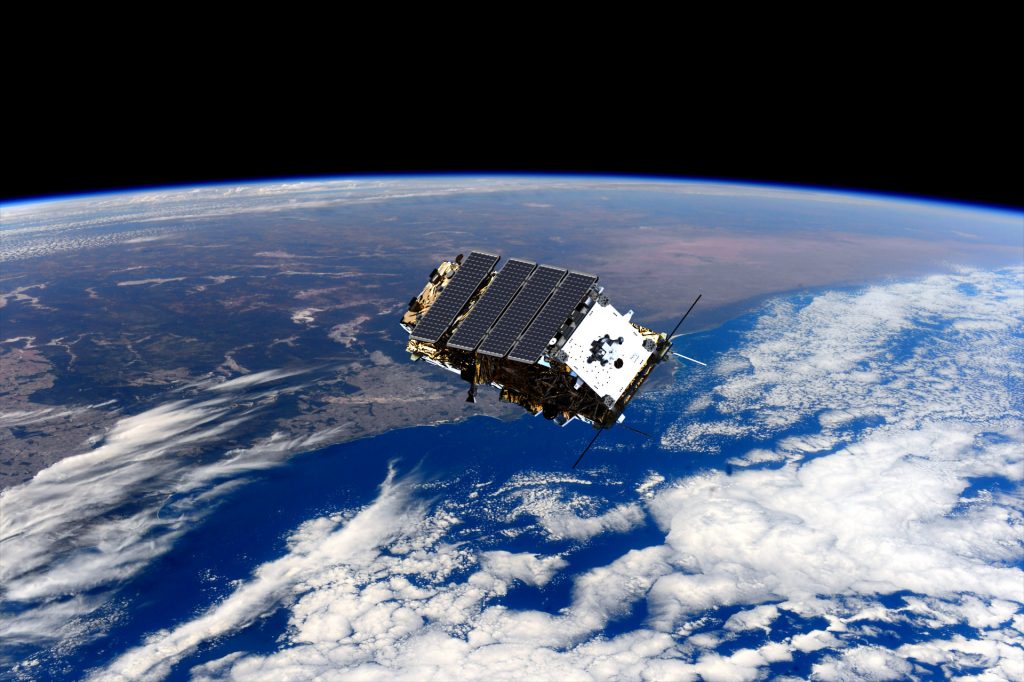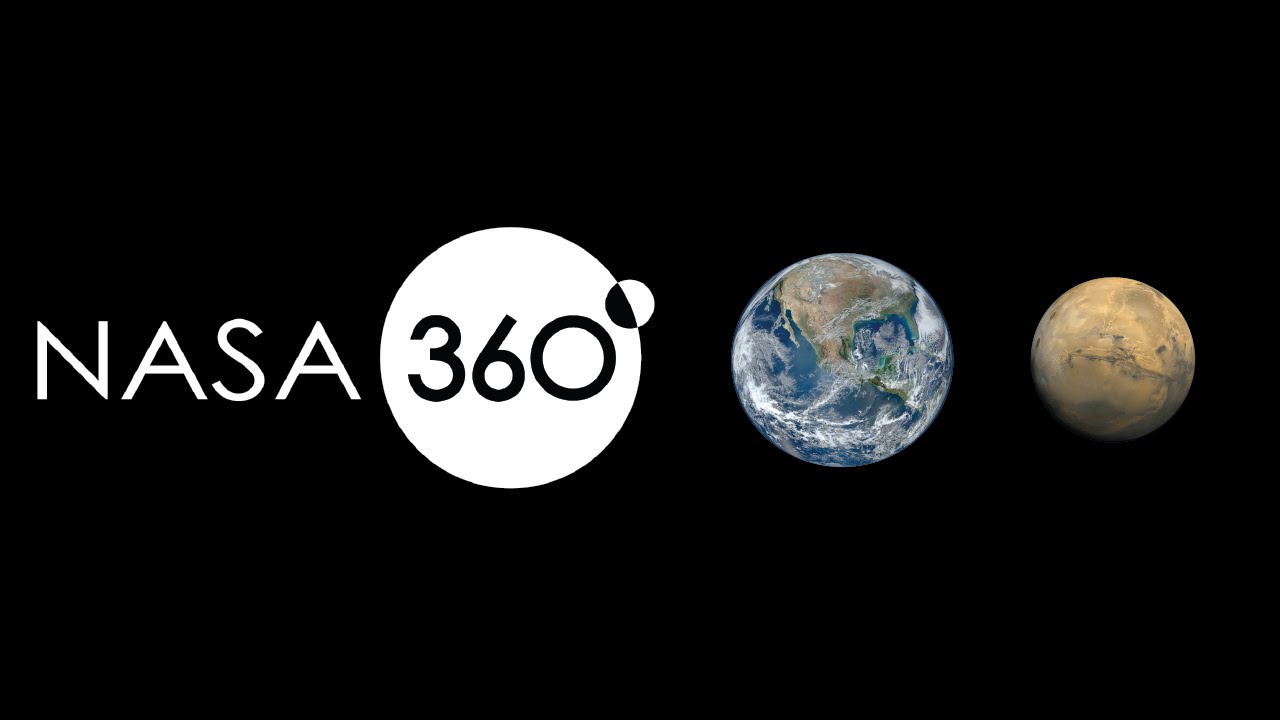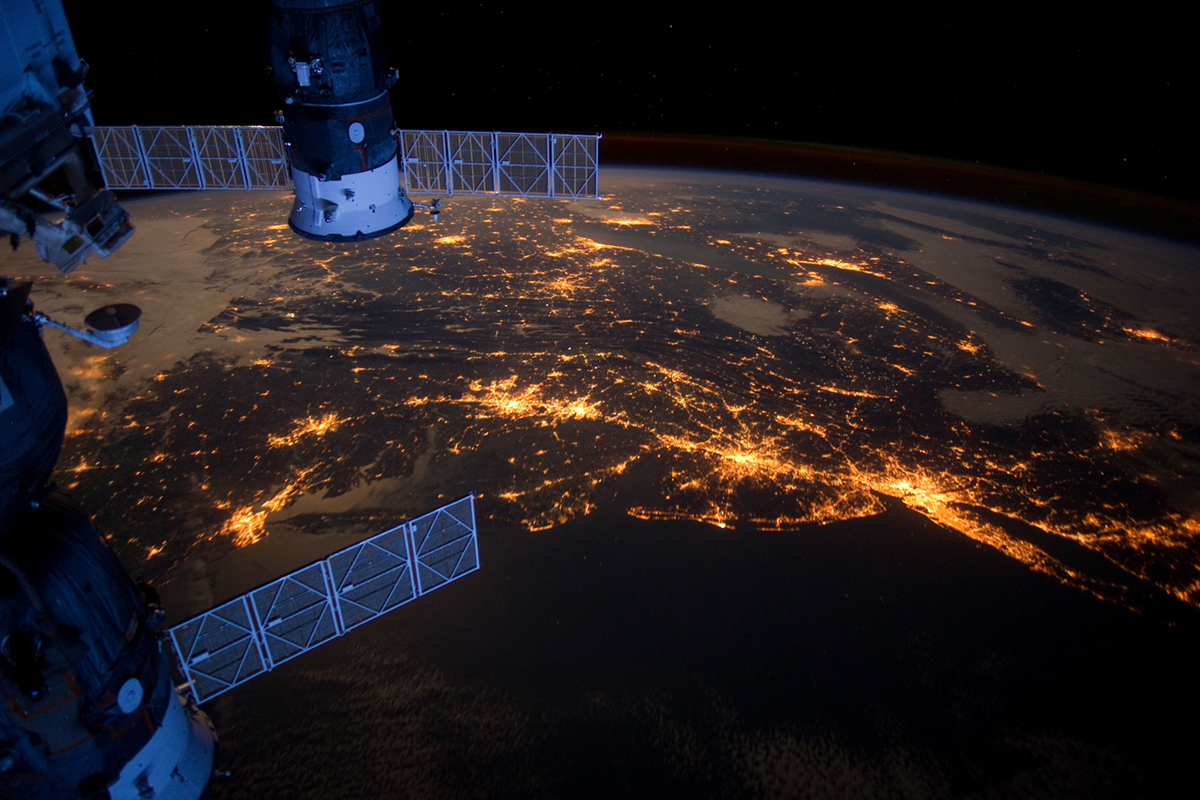Space Technology - The Current Difficulties And Potential Solutions
Space technology is any kind of technology that is used to travel to space or do other work outside of the Earth's atmosphere. Spacecraft, satellites, space stations, and orbital launch vehicles are all examples of space vehicles, as are deep-space communication, in-space propulsion, and many other technologies.
Author:Suleman ShahReviewer:Han JuAug 15, 20228 Shares637 Views

Space technologyis any kind of technologythat is used to travel to space or do other work outside of the Earth's atmosphere.
Spacecraft, satellites, space stations, and orbital launch vehicles are all examples of space vehicles, as are deep-space communication, in-space propulsion, and many other technologies.
Since Sputnik was launched in 1957 and the space age began, there have been a lot of improvements in space technology.
These improvements have led to a lot of new products, like satellite TVs and Satnavs for our cars.
On the other hand, it has been crucial to the development of fields like astronomyand atmospheric science.
The amount of ozone loss in the atmosphere was measured by satellites, and the existence of exoplanets and black holes has been proven, to name just a few of the field's most well-known contributions.
The fast growth of space technology has helped people do things like land on the Moon that have never been done before.
Images like the Blue Marble, which were taken on one of these flights, have come to represent Earth's beautiful ecosystem and limited resources, and have become an nstantly recognizable symbols of human achievement.
New Space And Regulatory Framework
A revolution known as "New Space" is currently taking place in the space industry as new business owners and entrepreneursenter an area that has typically been inhabited by institutional entities in order to take advantage of the new opportunities that are emerging.
These could range from innovative services provided through the use of space data (such as asteroid mining and more futuristic options like precision agriculture, surveillance, and navigation), to more conventional opportunities like space travel.
Successful entrepreneurs from other industries, such as Richard Branson in the UK and Elon Musk in the US, have ventured into the space industry, taking risks and upending the traditional "Old Space" business model's conservatism.
It is at this point that we may recognize our first obstacle and draw a lesson from the past to keep space from devolving into a lawless "wild west" where the strongest can gain an unfair edge.
This should apply to Medium (MEO) or Geosynchronous Earth Orbit (GEO), as well as to interplanetary exploration and exploitation.
To manage the growing space traffic, the current regulatory framework should be further developed and enforced to avoid interferences or collisions between assets of different operators.
In fact, new laws should be made while following already-made agreements and standards, such as the "Outer Space Treaty" or the "Convention on International Liability for Damage Caused by Space Objects."

NASA 360 Presents - Space Technology
Technical Challenges - Propulsion Systems
The performance of propulsion systems is a big barrier to overcome in the space sector, which brings us to the more technical issues.
Starting with the launch vehicles, their capabilities have effectively reached a plateau because only a very slow rate of incremental improvement has been accomplished over the past few decades.
The development of composite materials, which have mechanical qualities significantly superior to the conventional alloys employed at the start of the space age, has indeed enhanced materials.
With advancements in software simulation made possible by the phenomenal increase in computing power or new production processes like additive manufacturing, design and manufacturing procedures have also improved.
The development of electronics and software has also led to improvements in guidance and control systems.
The performance of solid or liquid propellants, which are essential to the total launcher capabilities, and related technologies, aside from the push toward green propellants, has not significantly improved.
It is undeniable that costs have slowly decreased, even though this is mostly owing to a combination of government policies and market forces, but truly affordable access to space has not yet been reached.
A few companies are using reusable launchers to cut costs or improve launch frequencies.
On a longer time horizon, the task is to develop and deploy technology, such as hypersonic air breathing rocket engines, to be used in hybrid launchers to reduce the need for massive amounts of oxygen carried by current vehicles.
It would also be beneficial to create launch vehicles that could land and take off like airplanes without requiring significant and expensive maintenance in between missions.
Space propulsion has a similar chance of getting better, especially when it comes to electric propulsion systems, which are hybrids that can work in more than one way.
Performance of the propulsion systems is especially crucial for interplanetary missions since it enables faster travel and the delivery of greater payloads where they are needed.
The main thing that keeps us from exploring the solar system with people right now is the length of the trip, which is directly related to how well our current propulsion technologies work.
Protection Of Humans
Space healthand medicine, which enable people to resist the space environment for extended periods of time, and the development of artificial homes in space and on other planets, which maintain a respectable standard of living for people, are directly tied to human exploration.
In this situation, it's hard to build a whole artificial environment that will support people's physical and mental healthand well-being.
This means protecting them from the bad effects of the space environment.
Some difficulties are shared whether we are thinking of a man-made spacecraft for long-distance travel, a space station for extensive human settlement, or a planetary colony.
The need to develop effective closed loop systems to replenish resources and reduce waste is one of these overlapping challenges.
The shared objective is to establish an artificial environment for the long-term sustainment of human life.
Planetary defense is another component of our duty to defend and maintain human life.
Asteroids and comets are examples of near-earth objects that could pose a serious threat.
When smaller objects like meteors hit the Earth, they usually burn up in the atmosphere.
However, some larger objects can survive and hit the Earth's surface with a strong force.

Transforming Future Space Technology
Earth Environment
In keeping with the protection of the Earth theme, climate changeposes a serious threat to our environment and has the potential to have terrible effects.
Satellite technologies can assist in addressing this challenge.
Globally, satellites provide unbiased data that can be used to monitor the environment, build and test models, and improve our ability to predict.
However, more work needs to be put into creating information that can be used to address specific needs and problems, distilling the massive amounts of data into clearer interpretations that can influence political debate.
For real-time Earth Observation to work, both institutional and private EO markets need very high standards for resolution and coverage, as well as a short time between visits.
Although there are literally hundreds of applications, their market penetration is still quite low.
These applications range from surveillance to disaster monitoring and resource management.
This is made clear when we contrast satellite EO with satellite telecommunications, where a large number of purely commercial firms operate (without institutional assistance) in a user-driven market, whereas institutional expenditures are still most frequently used to support the EO market.
Smaller, less expensive satellites and a number of firms proposing cost-effective solutions that promise technically acceptable performance at a price the market can tolerate have clearly shown a trend toward a more commercial EO sector.
In contrast, there is fierce competition in a market with insufficiently few consumers.
Low-Cost Space Technologies
The expansion of the cubesat market is proof that space is becoming more democratic and commercialized.
Here, space HW is offered at such low prices that it has attracted a growing number of customers, from space agencies to universities and schools, and made it possible for new businesses to start up and grow.
These systems, however, have very low performance, and their physical size is frequently a constraint (for example, the size of the optics limits the resolution that can be achieved, or the size of the solar panels limits the amount of power that can be collected).
Deployable structures have been created as a result, allowing needed components to be packaged into manageable (cubesat compliant) volumes before being launched into space to provide the necessary degree of performance.
These occasionally serve as demonstrations for technologies intended for bigger satellites, including drag sails.
Other technical problems, like the requirement for high platform stability, affect all smaller mass spacecraft, not only cubesats, and pose difficult hurdles.
This is essential for all missions utilizing optical payloads that require stability for inertial measurement types, such as those that support very precise targeted optical payloads (such as high-resolution cameras or telescopes or laser communication systems).
The problem is with minimizing the micro-vibrations that are generated by necessary on-board machinery and that, for instance, can result in intolerable line-of-sight oscillations.
Smaller boats have a more serious problem since they have less mass (inertia), which naturally causes the vibration intensity to be lower.
Practical applications still depend on the utilization of huge margins rather than accurate models since ground testing and modeling to forecast in-orbit performance are still unreliable.
Actively controlling micro-vibrations is still very hard and too expensive to do, especially at the lower end of the market, where most growth is expected.
Large Space Structures
Compared to cubesats, large space structures are at the other end of the size spectrum (LSS).
These have been examined and studied for many years, but actual advancement has been sluggish.
Similar to developments in propulsion, the ability to deploy LSS is another element that would enable a variety of applications.
But they have to deal with a number of important problems that vary from sector to sector.
On the one hand, there are devices like telescopes, cameras, and antennas that demand highly precise reflecting surfaces that are enormous (>10 m and maybe an order of magnitude greater).
The current methods in this field are limited by the size and number of segments that can be used [for example, the James Webb Space Telescope(JWST)], as well as the astronomical cost (for example, the use of precisely machined and polished mirrors whose positions and shapes can be changed by a series of actuators).
Many deployable alternatives, including inflatables and tensegrity structures, have been suggested for the antennas, but Europe still needs to find a suitable commercial solution for present and future applications.
New technologies that are lighter in weight must be used to improve the efficiency of packaging without lowering the quality of the finished reflector.
The sheer size of the structure (in square kilometers), as opposed to the geometrical accuracy that the constructed structure must attain, poses a problem in some future applications, such as satellite solar power.
It is important to achieve very low weight and efficient packaging, as well as assembly and deployment in orbit that are better than what is currently possible.
In-Orbit Servicing And Active Debris Removal
This brings up the advantages of robotic in-orbit maintenance and the creation of adaptable technology that can support multiple mission types.
These possibilities range from actively cleaning up space junk to servicing and maybe even fixing satellites that are already in use.
These ideas are not novel, as the Space Shuttle Discovery mission STS-51-A brought two old, non-operational satellites back to Earth in 1984 (possibly the first example of Active Debris Removal), and the shuttle Endeavor mission in 1993 (and subsequent missions) repaired and maintained the Hubble Space Telescope in an essential manner.
The possibility here is to create robotic systems that can carry out these kinds of tasks for a lot less money.
The first obstacle any approaching vehicle must overcome in order to meet this object for a rendezvous is the target's uncooperative nature, which could be in the process of tottering.
It is necessary to develop (and standardize) methods for stabilizing the target and tools for securely securing it, as well as to enhance the corresponding navigation (vision-based navigation), hardware, and software.
Even though there has been a lot of progress and some testing of equipment in orbit, we are still a long way from being able to do Active Debris Removal or in-orbit servicing in a way that is affordable and gives us enough confidence.
People Also Ask
What Is The Future Of Space Technology?
Robotics and AI will play a significant role in future space technologies that will support human astronaut teams.
According to researchers, robots may be able to maintain and repair current space stations while assisting scientists with data gathering and analysis.
What Is The Study Of Space Technology?
Space technology or space tech is the use of engineering principles in the design, development, production, and use of tools and systems for space travel and exploration.
Why Is Space Technology Important?
According to the research, the beneficial uses of space, which include improving communications networks, disaster relief, agriculture, education, and environmental and natural resource management, have huge implications for human growth, particularly for poor nations.
How Has Space Technology Benefited Society?
Overcoming the challenges of working in space has led to a number of scientific and technological advances that have helped people on Earth in many ways, including health and medicine, transportation, public safety, consumer goods, energy and the environment, information technology, and industrial productivity.
Conclusion
This article has provided a description of some of the issues that are being faced by space technology; nevertheless, there are other challenges, each of which presents potential for new advances (for example, those offered by multifunctional space structures or technologies like optical and quantum intersatellite communication).
When the numerous problems have been solved, which will take some time, they will serve as stepping stones for the development of future applications and businesses that will be to the social and economic advantage of communities all around the world.

Suleman Shah
Author
Suleman Shah is a researcher and freelance writer. As a researcher, he has worked with MNS University of Agriculture, Multan (Pakistan) and Texas A & M University (USA). He regularly writes science articles and blogs for science news website immersse.com and open access publishers OA Publishing London and Scientific Times. He loves to keep himself updated on scientific developments and convert these developments into everyday language to update the readers about the developments in the scientific era. His primary research focus is Plant sciences, and he contributed to this field by publishing his research in scientific journals and presenting his work at many Conferences.
Shah graduated from the University of Agriculture Faisalabad (Pakistan) and started his professional carrier with Jaffer Agro Services and later with the Agriculture Department of the Government of Pakistan. His research interest compelled and attracted him to proceed with his carrier in Plant sciences research. So, he started his Ph.D. in Soil Science at MNS University of Agriculture Multan (Pakistan). Later, he started working as a visiting scholar with Texas A&M University (USA).
Shah’s experience with big Open Excess publishers like Springers, Frontiers, MDPI, etc., testified to his belief in Open Access as a barrier-removing mechanism between researchers and the readers of their research. Shah believes that Open Access is revolutionizing the publication process and benefitting research in all fields.

Han Ju
Reviewer
Hello! I'm Han Ju, the heart behind World Wide Journals. My life is a unique tapestry woven from the threads of news, spirituality, and science, enriched by melodies from my guitar. Raised amidst tales of the ancient and the arcane, I developed a keen eye for the stories that truly matter. Through my work, I seek to bridge the seen with the unseen, marrying the rigor of science with the depth of spirituality.
Each article at World Wide Journals is a piece of this ongoing quest, blending analysis with personal reflection. Whether exploring quantum frontiers or strumming chords under the stars, my aim is to inspire and provoke thought, inviting you into a world where every discovery is a note in the grand symphony of existence.
Welcome aboard this journey of insight and exploration, where curiosity leads and music guides.
Latest Articles
Popular Articles
